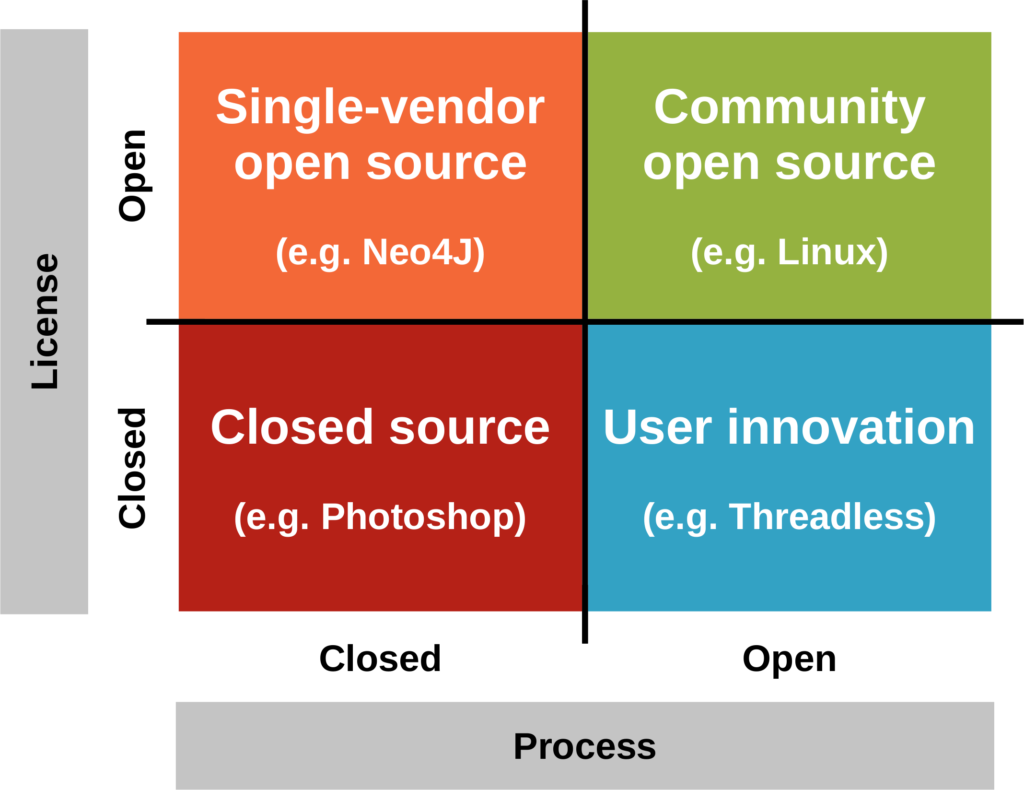When the Open Source Initiative defined open source, it focused only on the license, and ignored the process. Smart entrepreneurs quickly discovered that they could provide to the world their product as open source code and benefit from it, while strictly controlling the process to keep competition at bay. This is called single-vendor open source.
Single-vendor open source is not closed source, not even “the new” closed source. The following 2×2 matrix illustrates the distinction between license and process:

Closed source traditionally has been closed both on license and process. Community open source is the proper open source, open both in license and process. If you want to chide single-vendor open source as “not being proper community open source”, calling it closed source will only confuse.
I offer neo-proprietary as a better term. Neo-proprietary captures the dominance and control of a proprietor in both the traditional closed source and the single-vendor open source case without confusing the two.
Related reading
I write a lot on this subject, so you might like the following articles and videos:
- Original article explaining single-vendor open source (article)
- Control points and steering mechanisms in open source (article)
- Single-vendor open source and intellectual property strategies (video)
- The IPR imperative of single-vendor open source source (article)
More using the single-vendor open source search on this site.









Leave a Reply